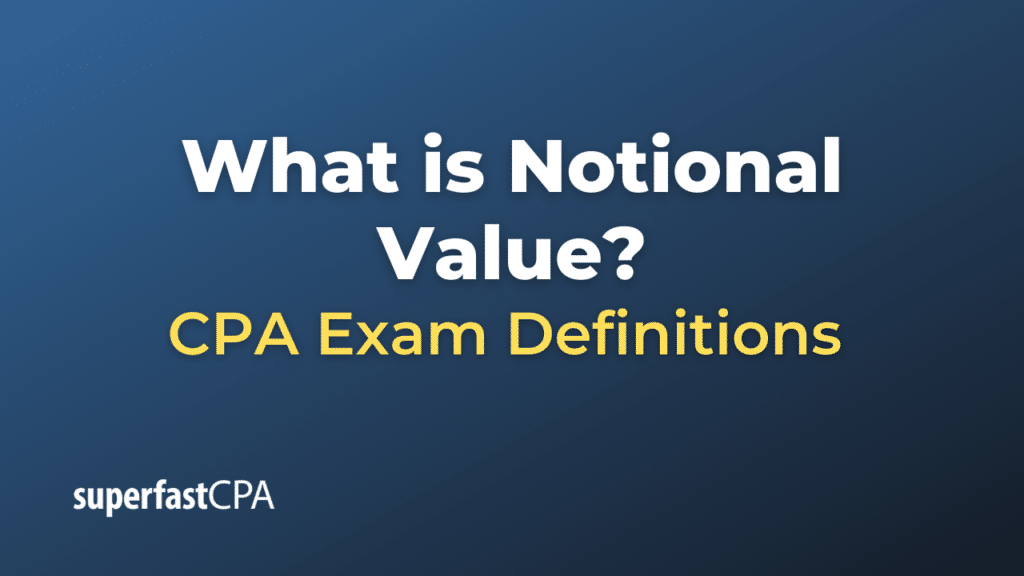Notional Value
Notional value, also known as notional amount or notional principal, refers to the total amount of a security’s underlying assets at its face or nominal value. The notional value is used when calculating how much money changes hands in financial derivatives transactions such as futures, options, or swaps contracts.
The term is most frequently used in derivatives trading, where the notional value of a derivative represents the value of the assets controlled by the derivative contract. It’s important to note that the notional value is not the same as the amount of money at risk in a derivative transaction, which is typically much less than the notional value.
For example, consider a futures contract for 100 shares of a company trading at $50 per share. The notional value of the contract would be $5,000 (100 shares * $50/share). However, the buyer of the futures contract might only have to put down a margin of 10% to enter into the contract, meaning they only have to put down $500 of their own money.
In this case, while the notional value of the contract is $5,000, the actual amount of money at risk from the buyer’s perspective is only $500. This is one of the ways in which derivatives can provide significant leverage for investors, as a relatively small amount of money can be used to control a large notional value.
However, this leverage also means that losses can be magnified if the value of the underlying asset moves against the investor’s position. Therefore, understanding the notional value of a derivative is crucial for understanding the potential risk and reward of the derivative.
Example of Notional Value
Let’s look at an example involving a swap contract, which is a derivative where two parties exchange (or “swap”) cash flows or other variables associated with different investments:
Consider Company A, which has a $10 million loan with a variable interest rate currently at 5%, and Company B, which has a $10 million loan with a fixed interest rate of 6%.
These two companies could enter into an interest rate swap contract in which Company A pays Company B the fixed rate (6% on $10 million = $600,000 annually) and Company B pays Company A the variable rate (5% on $10 million = $500,000 annually, although this could change if the variable rate changes).
In this case, the notional value of the swap is $10 million. It’s called the “notional” value because this $10 million never actually changes hands in the swap contract. Rather, only the interest payments are exchanged.
However, the actual amount of money at risk is much less than the notional value. The risk for each company is the difference between the fixed and variable payments, which could change over time as the variable rate changes. For example, if the variable rate rose to 7%, then Company B would be paying Company A 7% on $10 million = $700,000 annually, whereas Company A would still be paying Company B $600,000 annually. The difference in payments (in this case, $100,000) is the actual money at risk.
This example illustrates how the notional value of a derivative can be much larger than the actual amount of money being risked in the derivative transaction.














